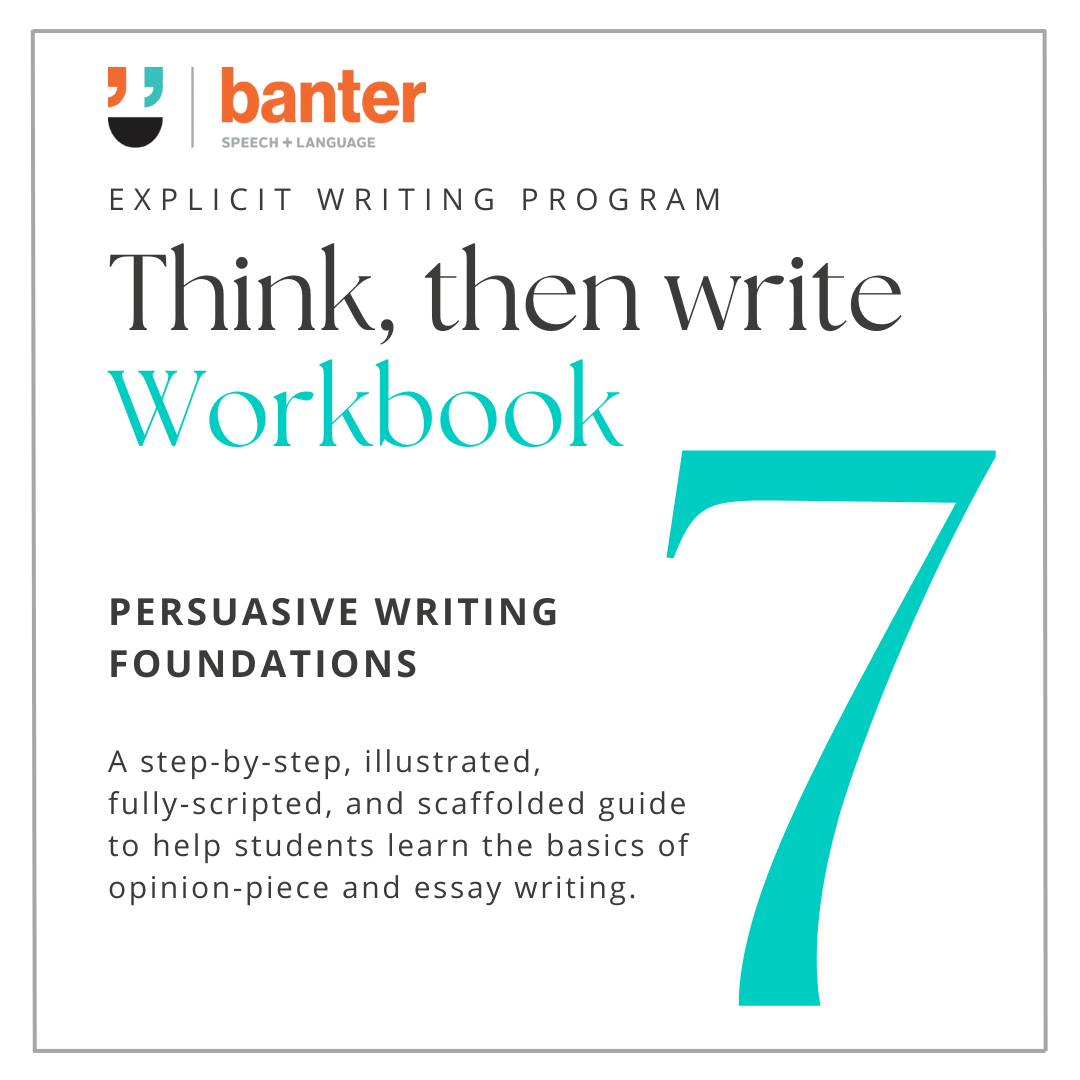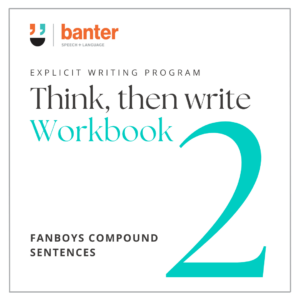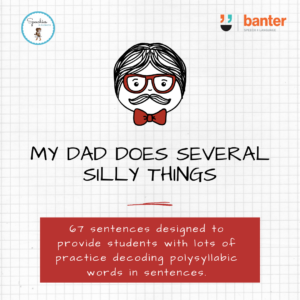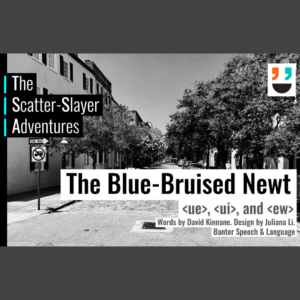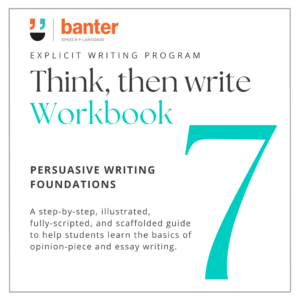(R808) Think Then Write Workbook 7: Persuasive Writing Foundations
$50.00 including GST
Think, Then Write Workbook 7: an explicit writing program featuring persuasive writing foundations – a step-by-step, illustrated, fully-scripted, and scaffolded guide to help students learn the basics of opinion-piece and essay writing.
Our 120+ page no-prep plain English workbook (a volume of our Think, Then Write Explicit Writing Program) is designed to be useful for older students of all abilities. It is about three main things (1) opinions, (2) persuasion; and (3) persuasive writing. Given persuasive writing is complex, we break it down into fourteen interactive and scripted steps as set out below.
Description
Think, Then Write Workbook 7: an explicit writing program featuring persuasive writing foundations – a step-by-step, illustrated, fully-scripted, and scaffolded guide to help students learn the basics of opinion-piece and essay writing.
What we cover in this resource
Our 120+ page no-prep plain English workbook (Volume 7 of our Think, Then Write Explicit Writing Program) is designed to be useful for older students of all abilities, including many students with language and other neuro-developmental disorders. It is about three main things:
-
- opinions
- persuasion; and
- persuasive writing.
How we teach it
Persuasive writing is complex. We break it down into fourteen interactive and scripted steps:
-
- First, we look at opinions.
- Second, we look at differences in opinions. Different people have different opinions about many different issues.
- Third, we look at persuasion: what it means, and times you might want or need to be persuasive.
- Fourth, we look at some of the main ways that people persuade others to do things or to change their minds.
- Fifth, we discuss persuasive language.
- Sixth, we introduce persuasive writing as a useful school, work and life skill, and look at how expert persuaders use language to influence our decisions and actions.
- Seventh, we show that persuasive writing is a learnable skill and outline:
- the four main parts of a persuasive writing text; and
- the eight main steps you need to complete to do a good job.
- Eighth, we look at how to remember the main parts and steps for writing persuasively in order, and introduce evidence-informed mnemonics (memory aids).
- Ninth, we introduce evidence-informed writing scaffolds to make planning and writing a persuasive writing text easier.
- Tenth, we include a worked example showing how, exactly, to use the mnemonics and writing scaffolds to write persuasively. (I do.)
- Eleventh, we write persuasive texts together, using the mnemonics and writing scaffolds. (We do.)
- Twelfth, we include exercises for independent writing practice using the mnemonics and writing scaffolds. (You do.)
- Thirteenth, we include additional writing exercises to provide more practice:
- with scaffolding for students who need it; or
- with less or no scaffolding for more confident persuasive writers.
- Fourteenth, we provide some key references and preview the next volume of Think then Write, where we look at persuasive writing tasks requiring writers to address two or more sides of an argument.
For more technical detail about the theory of persuasive writing, check out our article here.

